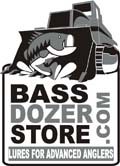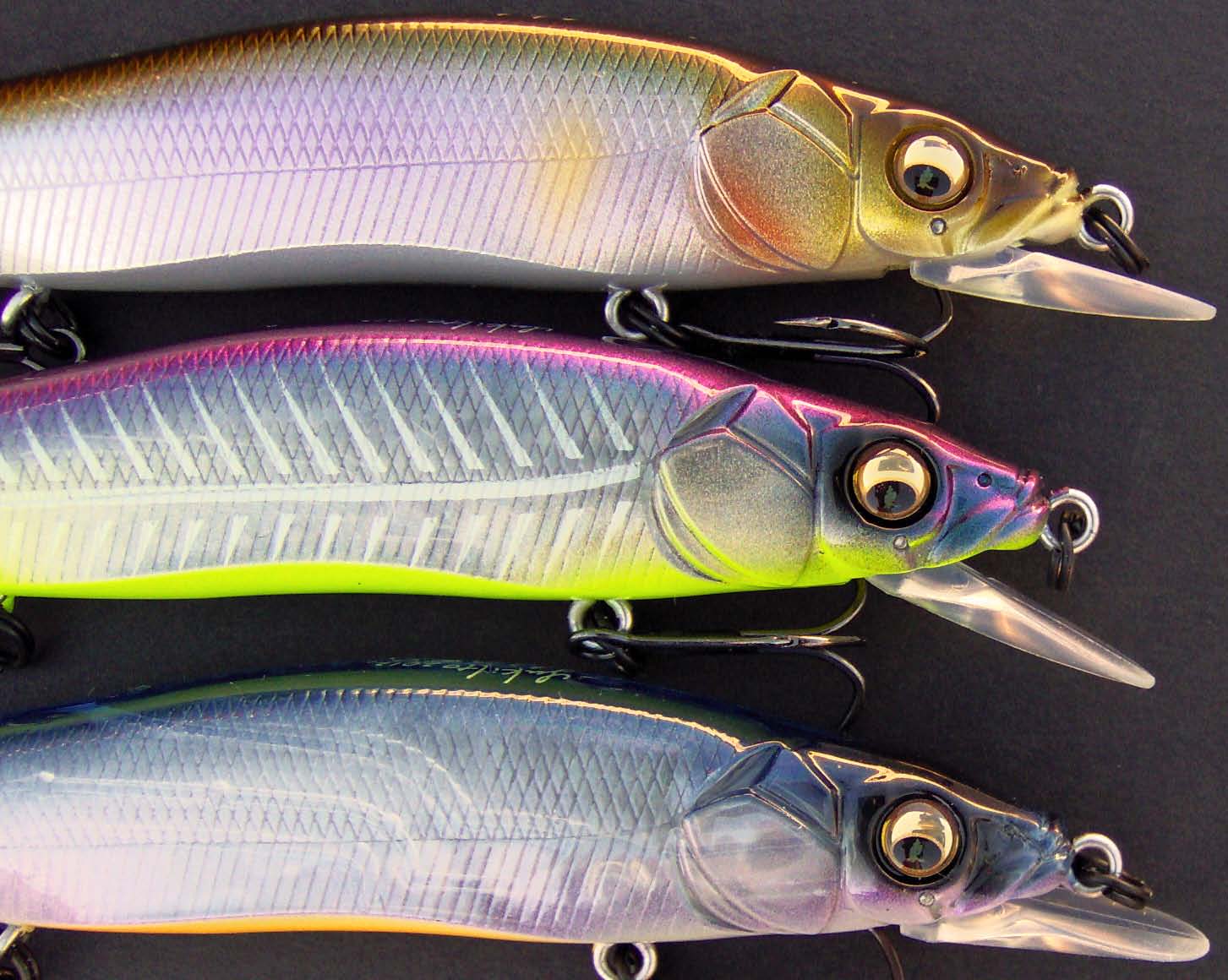
Megabass lure colors are at once the most magnificent and most confusing colors on the planet. They are the richest, most stunning and complex lure patterns in the world. The colors are durable too. Yet they're confusing since there are so many patterns so similar to each other. There's a huge number of what's essentially dark-backed, flashy or translucent-sided, light-bellied patterns that are so similar that they're hard to tell apart from each other - yet all good. Many of the colors have names foreign to anglers outside Japan; names including wakasagi, ayu, oikawa refer to Japanese baitfish. For example, to mimic the wakasagi baitfish, many Megabass colors have purple sheens or markings. Ayu patterns typically have a chartreuse mark behind the gill flap with green backs over chartreuse shoulders to mimic Japan's ayu baitfish. These are good colors for bass in the USA except they are unfamiliar names to bass anglers outside Japan. Simply, there are not other lure brands on the US market with purplish sheens, shots or overtones to mimic the wakasagi baitfish - so it's unfamiliar. Add on that the Megabass color naming is cryptic, using color codes people don't know such as HT, M, IL GG, GP, etc. Those are some of the reasons why I say Megabass lure colors are at once the most magnificent and most confusing colors on the planet.
There's no way I can accurately and completely describe every feature of an elaborate Megabass finish, and even if I tried, the descriptions would get so complex and confusing they'd almost result in non-information. The following descriptions are not necessarily correct or complete - and even the photos do not fully show all the holographic effects, the accents, sheens and such. There's just no way a camera can capture all the intricacies of Megabass lure colorations - and they vary wonderfully under different lighting situations.
For instance, a trademark of many Megabass colors is the recurrence of a purple pearlescent sheen atop the back colors, or as purple accent markings or sheens under the tails. This use of a purple sheen is so common on Megabass colors that I don't always describe it below. Also, where I say some of the white pearl belly colors have a pinkish sheen, in some cases, it may be a purple sheen that is so thin and light to appear pink. It's too close to call it correctly in some cases.
The Finishes
There are several distinct aspects to a Megabass lure pattern - the finish, then the color and finally, the markings or accents on the baits.
There are several finishes in their line of baits:
► Guanium Ghost finish (GG) - is one of the most popular Megabass finishes. It's used in order to apply guanine, a natural substance found in fish scales that causes reflection on fish scales. Combined with the fine etched scale lines molded into the plastic, it gives convincingly realistic baitfish flesh look to Megabass baits.
► Guanium Phantom finish (GP) - Whereas Guanium Ghost (GG) applies guanine over a colored bait, the Guanium Phantom (GP) finish is the same effect of applying Guanium finish over a translucent bait without coloring applied to the bait.
► Neon Core finish (NC) - Basically the GP finish, but with the GP applied on a flat reflective panel that's housed lengthwise inside of the baits. The flat panel will send a much larger reflection than off the round body surface.
► Pearl Mica (PM) finish - This is representative of Megabass' opaque (solid) color finishes. But bear in mind, all Megabass baits (except BONE colors) are made starting with clear plastic, so even non-Guanium finishes (such as PM and other solid colors) do not block light completely. All Megabass baits allow some light to come through the bodies, making the colors more vivid than other brands made of opaque plastics with whatever colors on top.
► Metal (M) finish - This is a foiled material for imitating fish scales, and it's solid or opaque, not translucent. When you want a mirror-like reflectivity, the Metal finish may be the one for you.
► Mat finish - Non-glossy or flat finish that does not lose color intensity by reflecting light. Mat finishes will emit strong flashes of the painted-on mat colors as they move and roll.
The Colors and Markings
Megabass finishes, such as the above, are applied over colors. Colors can imitate the looks of primary prey in any environment. Since some prey may have characteristic markings, lures that imitate those species will be painted with those markings too.
Colors applied to mimic prey are said to be natural colors. Yet other colors can also be non-natural, imitating nothing in nature. Bold colors can be applied to infuriate aggressive bass or to generate instinctive reaction strikes from non-feeding, lethargic bass.
Markings may be applied that are non-natural too. These are markings that aren't characteristics of any prey species. For example, an orange belly marking (great example is the Pro Blue II color) may be applied in order to give contrast, to highlight motion and to channel strikes toward the marking and the hooks.
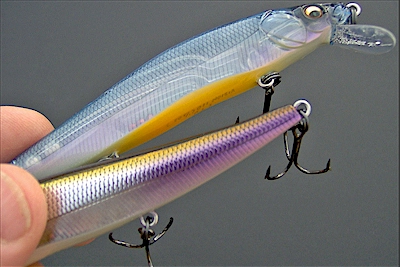
Megabass patterns often apply strategic markings such as the orange belly or purple tail to attract strikes.
Other Megabass Shorthand and Terminology
You may also need to know:
► HT - Half Tone; often with a metal top half (shoulder foiling with translucent back) and GP bottom half
► II - Second variation, typically more elaborate markings than the first. Not to be confused with IL
► IL - Illusion finish which I assume (not entirely certain) is a clear holographic effect.
► Ito - Colors partly named after Megabass founder and designer, Yuki Ito
► OB - Orange belly. Also CB - chartreuse belly. RB - red belly.
► Wagin - Japanese for Silver. Wakin - Japanese for Gold.
► Wakasagi - a purple-hued baitfish in Japan, responsible for many Megabass colors having purplish hues. Hasu, Oikawa, Ayu also refer to Japan's native baitfish
► WO - without OB
Deadly Black
This pattern stands alone. A dark color unlike any other popular lure color on the US market. You can say it starts out a black/gold color - but with so many layers of paint and finish that turns it into a truly unique pattern. Rather than try to describe this color in more detail, it suffices to say this is one of the most unique "must have" colors made by Megabass. Be forewarned though - it goes by many names (Deadly Black IL, Deadly Black Illusion, Deadly Black Shad) each with differences. I have even seen this pattern produced with silver as opposed to the dark golden sides. Get the right version of Deadly Black though, and as it's name implies, it's truly one of the deadliest Megabass jerkbait patterns. Every angler should have one. It's at its best under dark sky or water conditions...but then again, it can also be found in translucent finishes that work well in lighter-colored water and under bright skies. It is at once one of the best and one of the most confusing patterns in the world of Megabass.
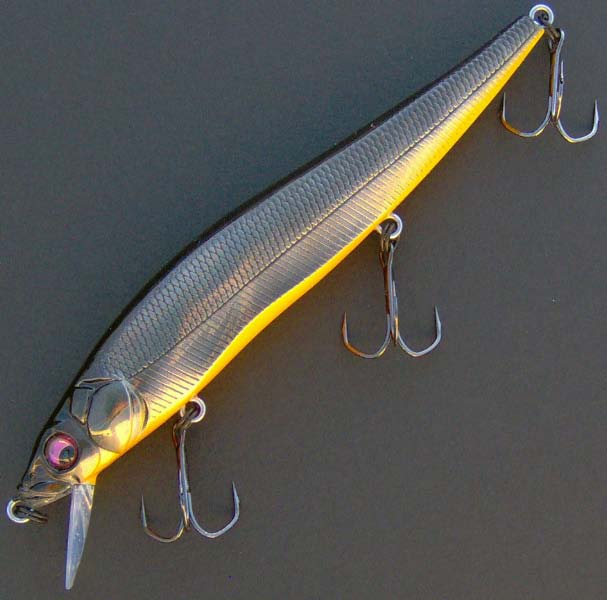

GG Deadly Black Shad OB (left) is one of the best Deadly Blacks. GW Stealth Shad (right) is almost indistinguishable from some Deadly Blacks and as good (I have no clue what GW stands for).
Elegy Bone
Another unique and devastating Megabass "must have" jerkbait color. In order to relate to you just how effective this color is, it's no secret that Luck-E-Strike and Rick Clunn have cooperated on a relatively new line of jerkbaits - and they have incorporated a color very similar to Elegy Bone into their new product line. At ICAST 2012, Rick Clunn singled it out as his favorite color for his new jerkbait line. If Clunn's endorsement doesn't convince you it's good - maybe catching many fish, especially in stained water will!
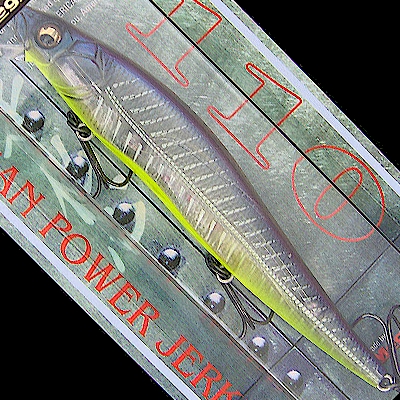
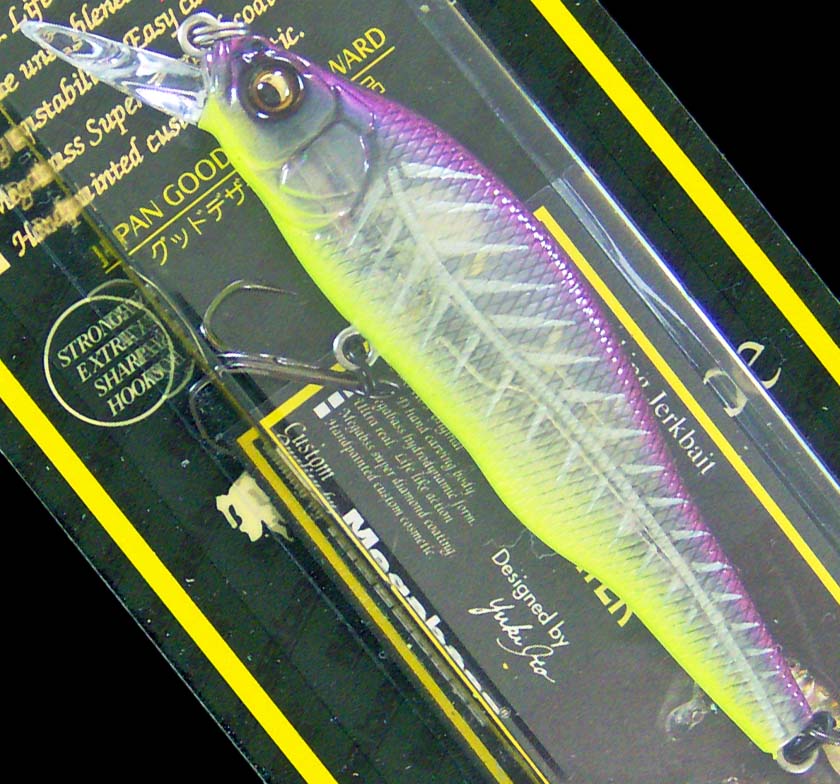
Elegy Bone
GP Pro Finishes
The GP Pro colors are all translucent ones. The most famous are the clear-sided colors like GP Pro Blue. However, some other GP Pro colors (GP Pro Perch, etc) have color-tinged sides yet still translucent
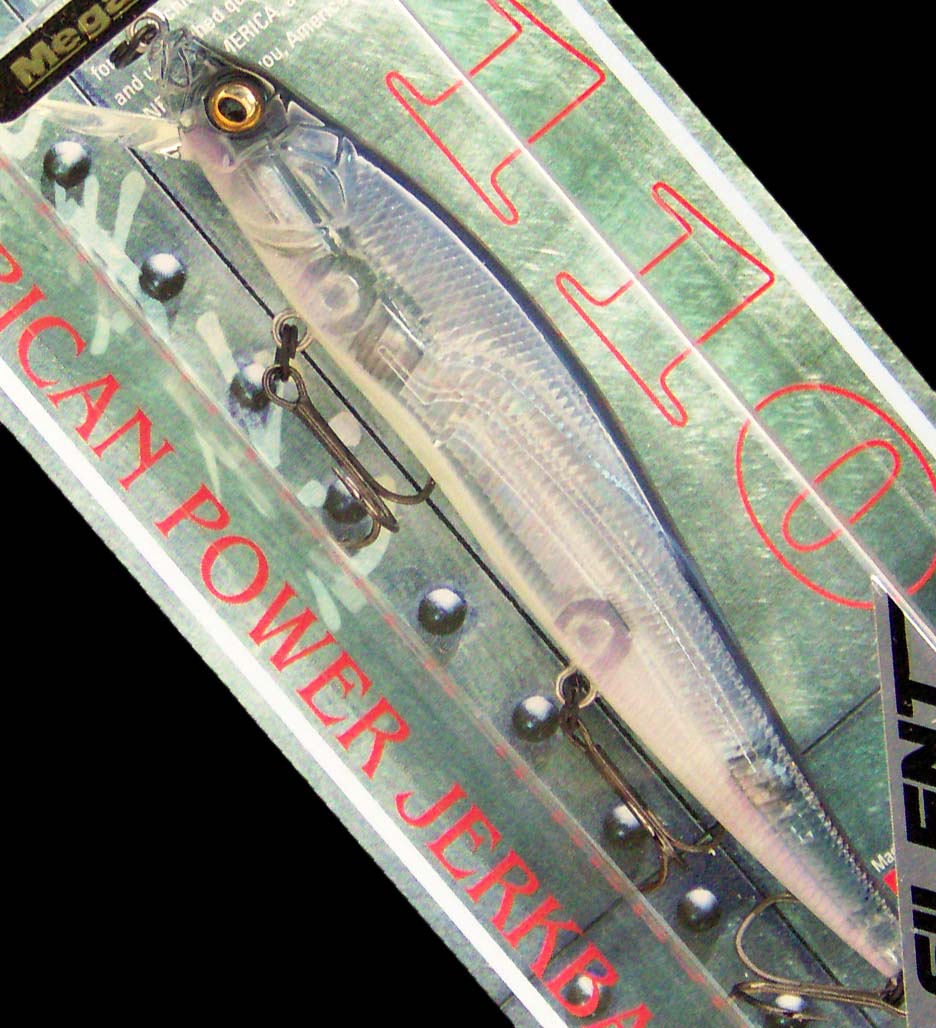
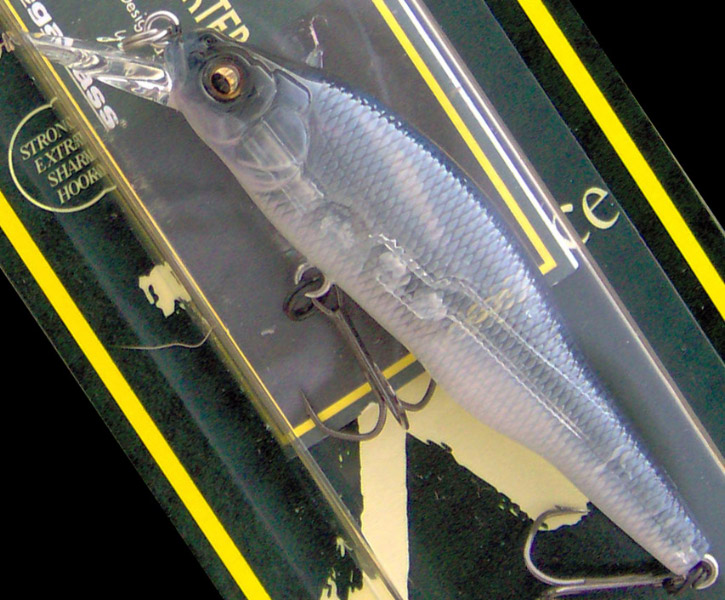
GP Pro Blue - Simply, it is the most legendary Megabass jerkbait color for clear water.
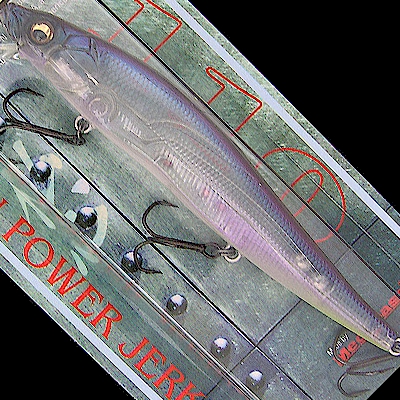
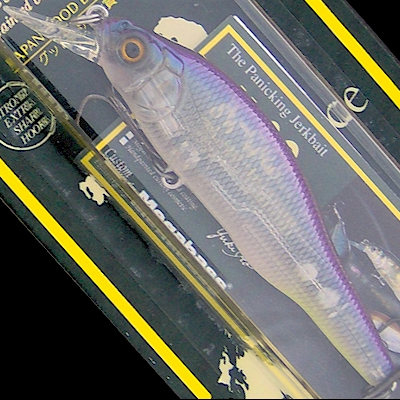
GP Skeleton Tennessee - Very similar to GP Pro Blue. The biggest difference is GP Skeleton Tennessee has a light-shifting purple/blue sheen on back whereas GP Pro Blue has predominantly blue back. GP Skeleton Tennessee also has pale chartreuse marking under the tail. Pearlescent pale pink/light purple sheen on subtle white pearl belly. Bottom line, GP Skeleton Tennessee is the color to have in addition to or as an alternative to GP Pro Blue.
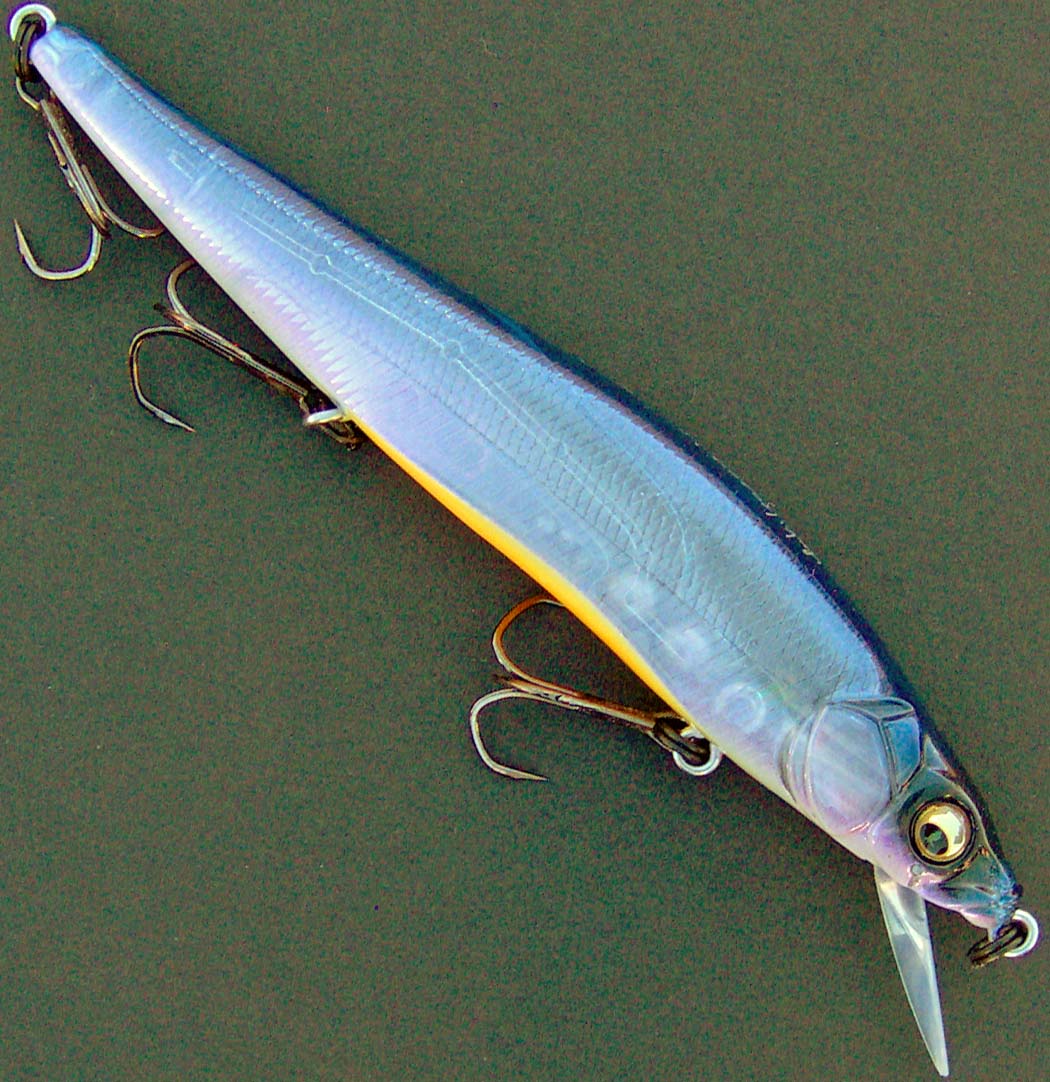
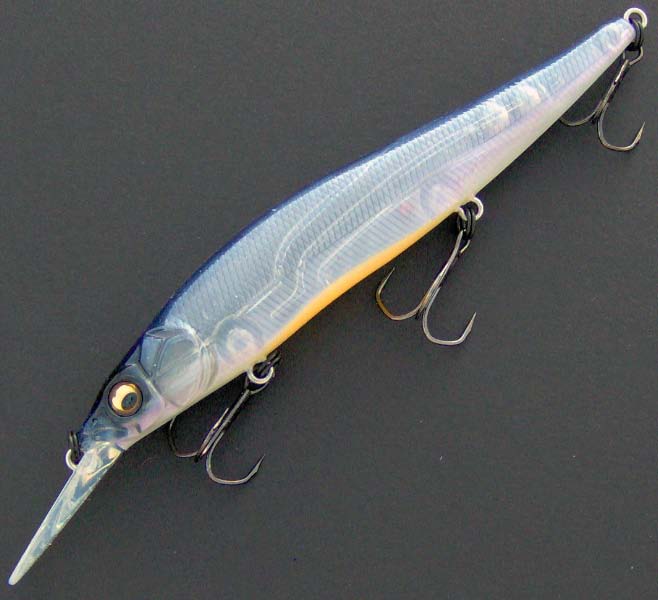
GP Pro Blue II adds an orange marking strategically between the two belly hooks, channeling strikes to that area and also exaggerating bait movement via contrast.
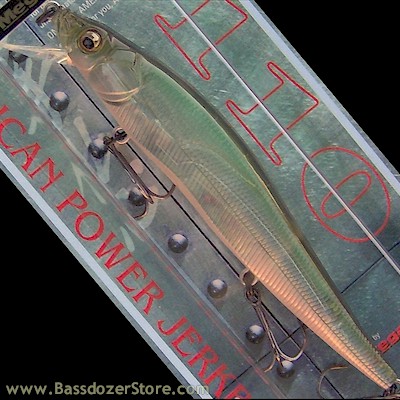
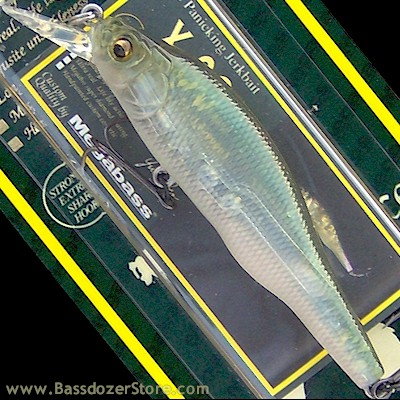
GP Pro Green (left) is a relatively recent addition for Megabass and offers a good alternative to Pro Blue for clear water. GP Crystal Shad (right) is also new, also green translucent and illustrates how many Megabass colors are similar yet different in that GP Crystal Shad has translucent aqua green back with translucent aqua blue upper shoulders. Sides are clear translucent with subtle holographic sheen to sides. Pearlescent pale pink/light purple sheen on subtle white pearl belly. But then again, that can almost describe GP Pro Green too. Kind of makes you want them all, eh?
GG Finishes
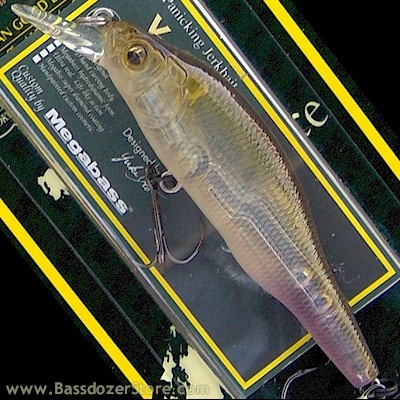
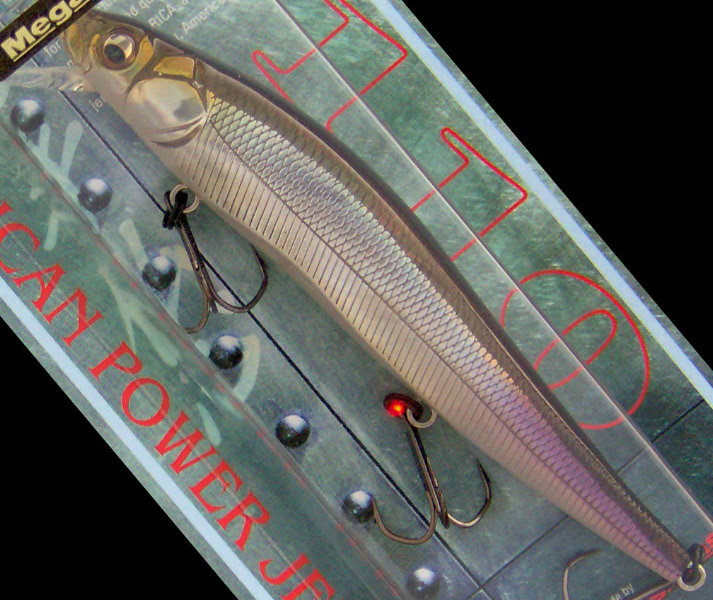
GP Wakasagi (left) and GG Wakasagi (right) nicely illustrate the differences between GP and GG finishes. GP finishes are applied over clear translucent colors. GG is over painted translucent colors. Both have the telltale purple wakasagi marking under their tails.
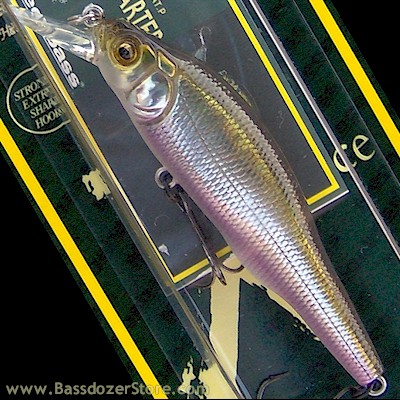
But that's not all! In addition to GP Wakasagi and GG Wakasagi there's GG Flashing Wakasagi. As it's name implies, has flashing sides. All three of these - GP Wakasagi, GG Wakasagi and GG Flashing Wakasagi are great choices for all-around conditions in general, illustrating how GP's useful for clearer conditions, GG for average, ordinary situations and GG Flashing when greater reflection proves useful.

GG Hasu illustrates how many Megabass colors are so similar. GG Hasu (which is the name of a baitfish in Japan) doesn't have the purple marking of GG Wakasagi (above right)
Neon Core Finishes
Basically the GP finish, but with the GP applied on a flat reflective panel that's housed lengthwise inside of the baits. The flat panel will send a much larger reflection than off the round body surface.
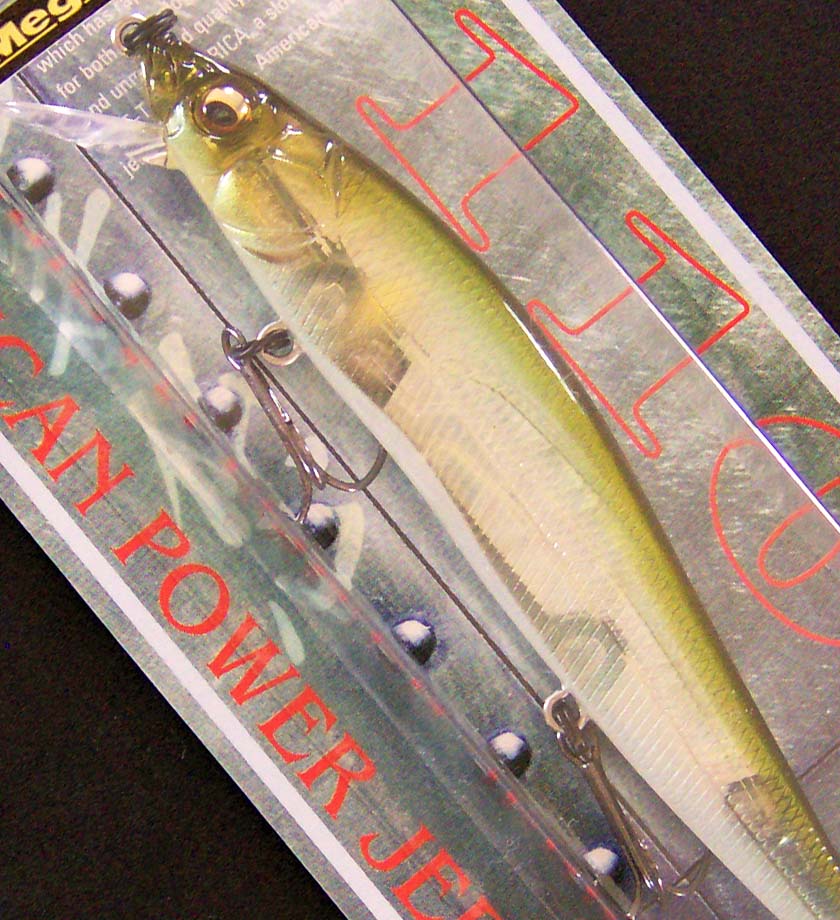
NC Kisyu Ayu
Half Tones
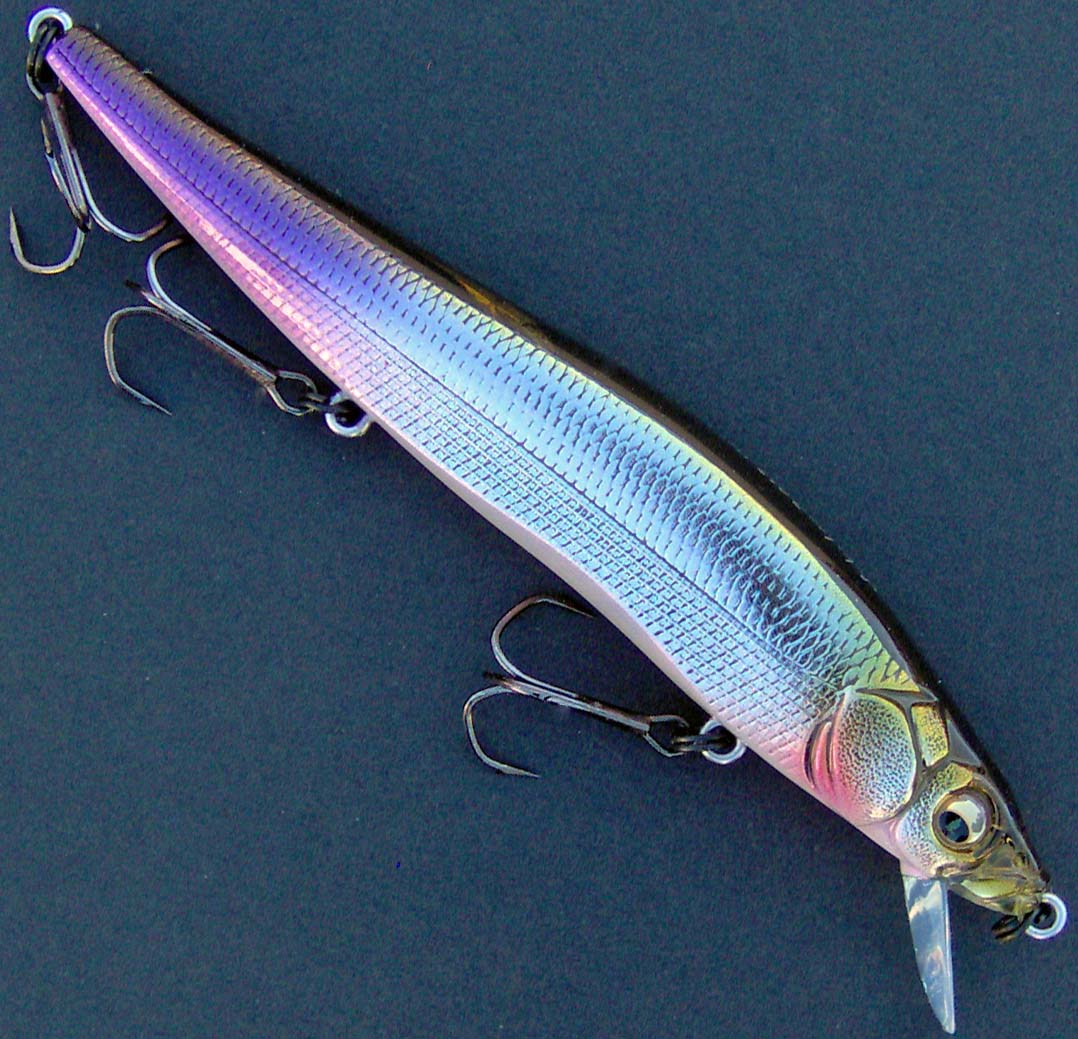
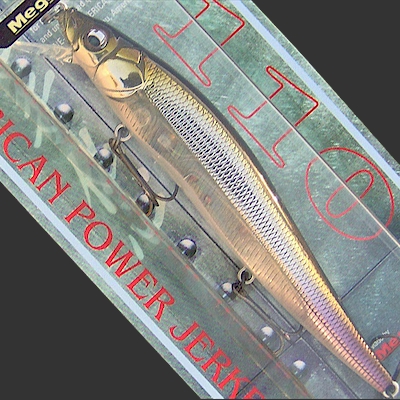
Ito Wakasagi (left) and HT Ito Wakasagi (right) demonstrate nicely what the half-tones are.
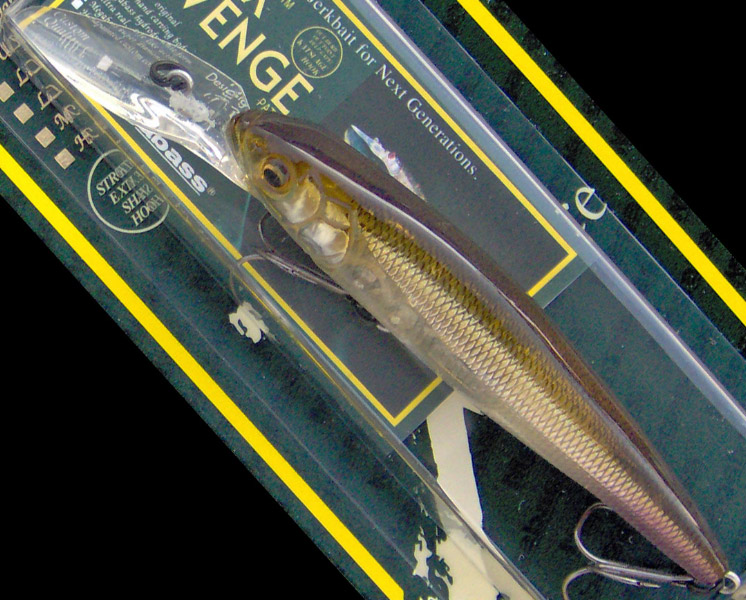
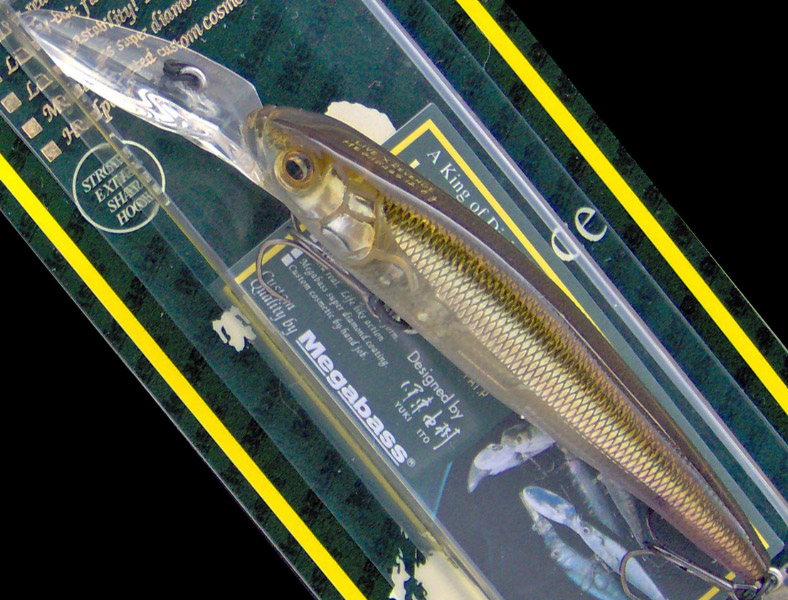
HT Ito Wakasagi (left) and School Bait (right) show how many Megabass colors are so similar - and all so effective.
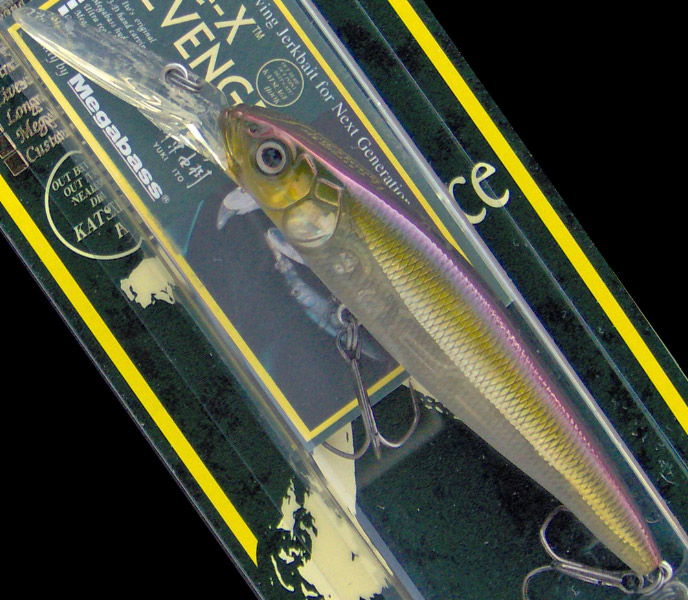
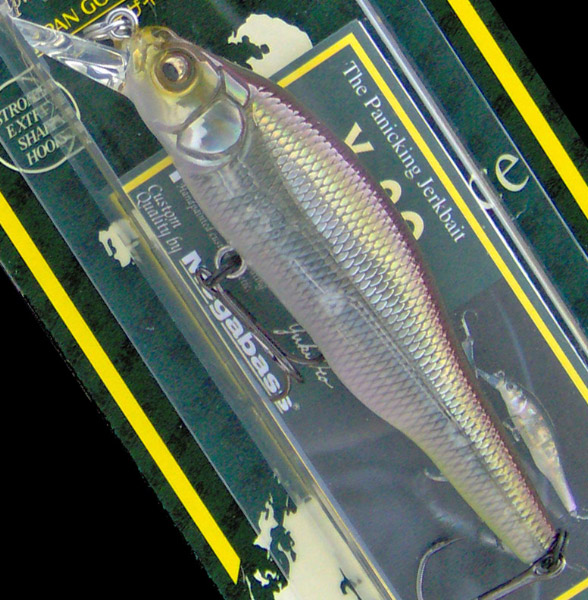
HT Tennessee Shad (left) and HT Ito Tennessee Shad (right). Elaborate complex colors that are among the most popular. Holographic effect changes based on viewing angle. Purple sheen on green back with translucent golden upper shoulders. Upper half of sides are metallic silver. Lower half of sides are clear translucent. Overall holographic sheen to upper and lower sides. Pearlescent pale pink/light purple sheen on subtle white pearl belly. Pale chartreuse color accent under the tail.
Metal Finishes
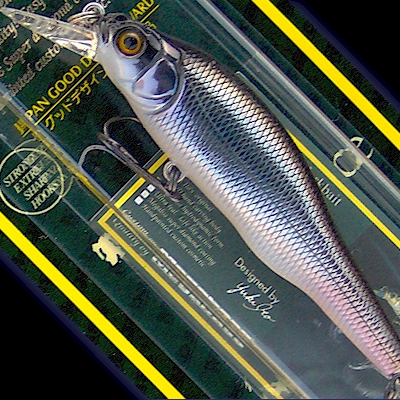
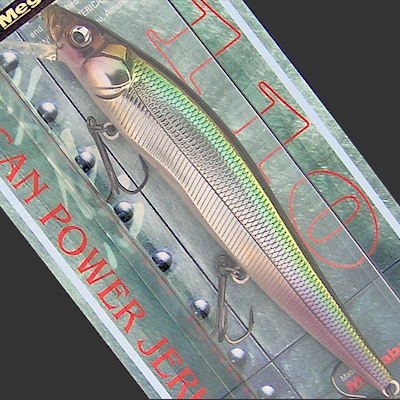
M Cosmic Shad (left) is a characteristically complex Megabass color that reveals several subtle accent hues as the light reflects off it from varying angles. Very dark to black back with dark metallic green shoulders and overall silverside effect. A great match for many dark green-backed, flashy silver-sided baitfish. Then again, there are many other semi-similar metal finishes with dark black, blue or green backs and chromed sides such as M KGB, M Shad and M TNG (right) which has a complex green back made of several green layers. If you are looking for a chrome effect, you can't really go wrong with any of these - just pick your poison.
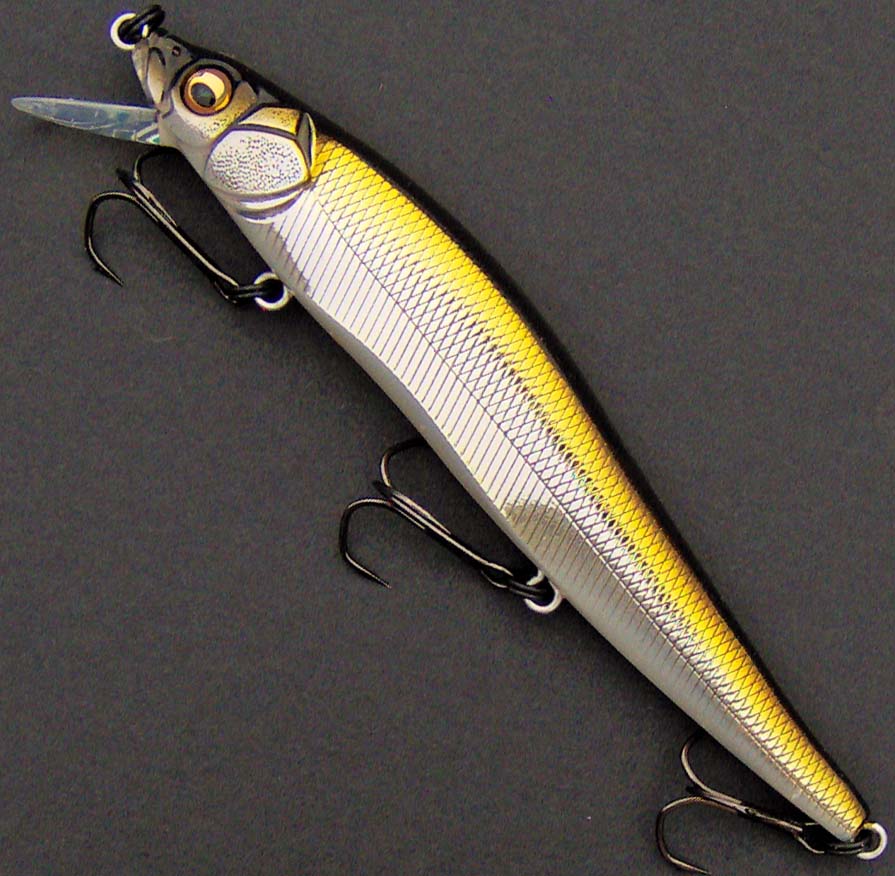
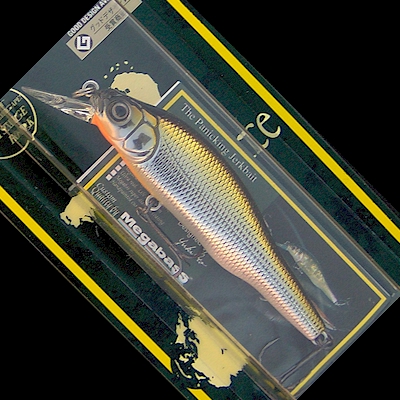
M Stardust Shad (left) and M Stardust Shad II (right) differ by the orange throat marking. It's at once awesome yet intimidating to have so many stellar color choices!
Sexy Shad Colors
Like every hard bait vendor, Megabass has - and continues to offer new, sexy shad patterns.
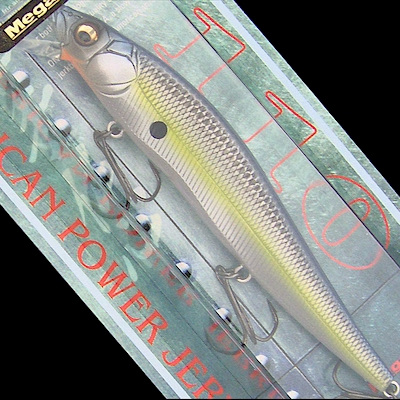
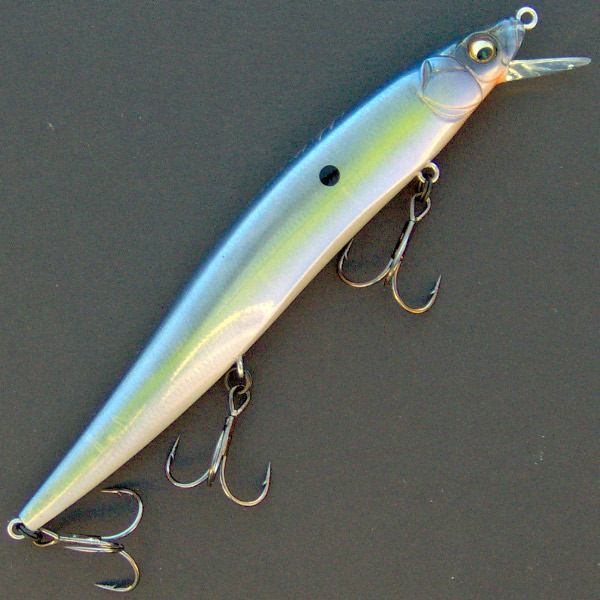
MSS (left) and GP Sexy Shad (right) were introduced relatively recently. New, similar patterns such as Sexy French Shad will be available soon
Pearl Mica Finishes
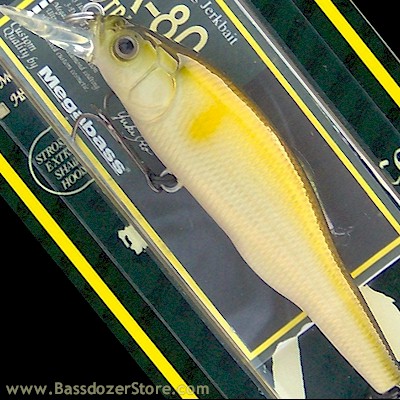
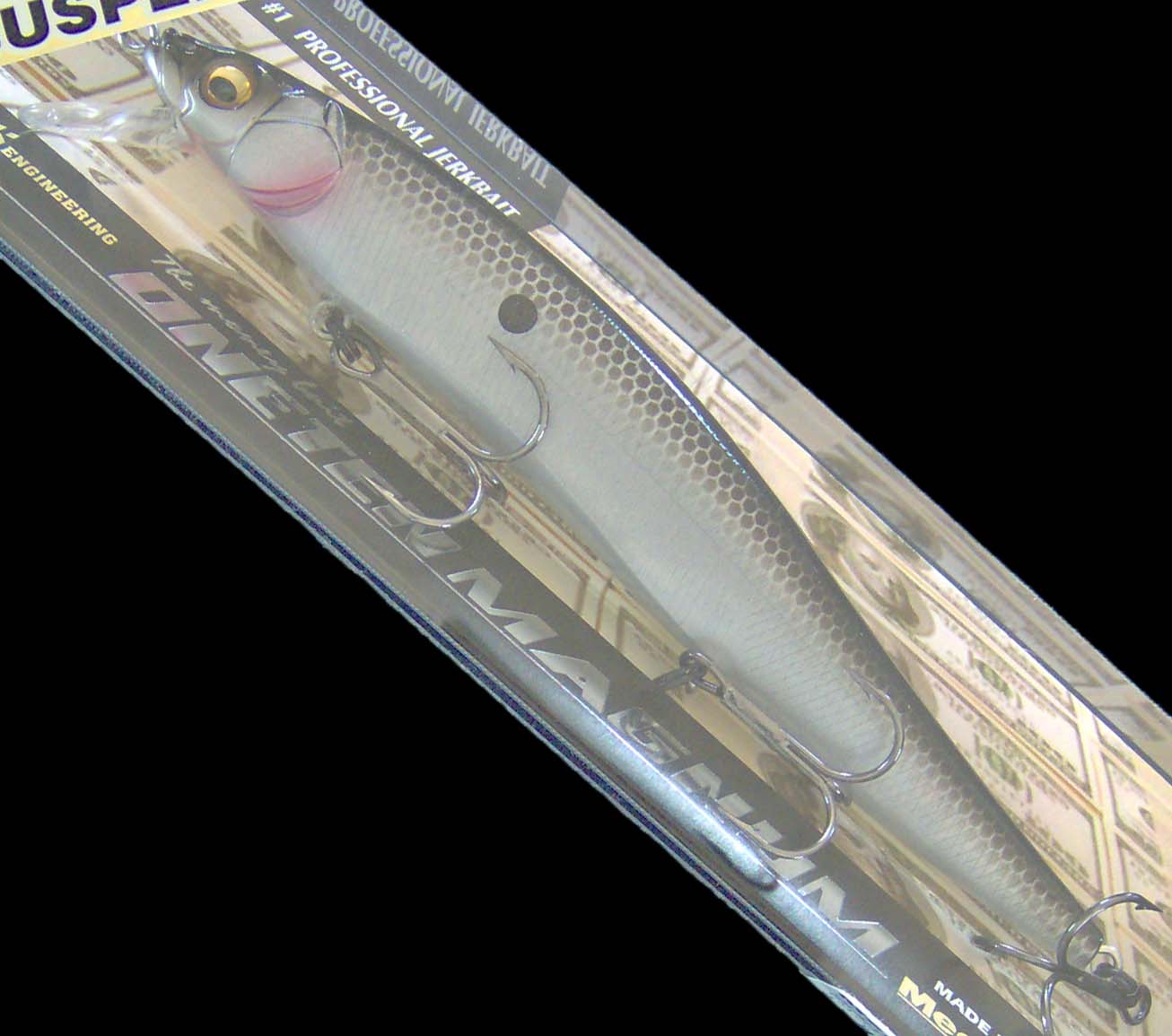
PM Ayu pattern illustrates the Pearl Mica finish as well as the Ayu baitfish pattern. Pearl Mica is one series of Megabass' opaque (solid) color finishes. But bear in mind, all Megabass baits (except BONE plastic) are made starting with clear plastic, so even PM (and other solid colors) do not block light completely. PM Ozark Shad (right) simply illustrates one other Pearl Mica color that's quite effective.
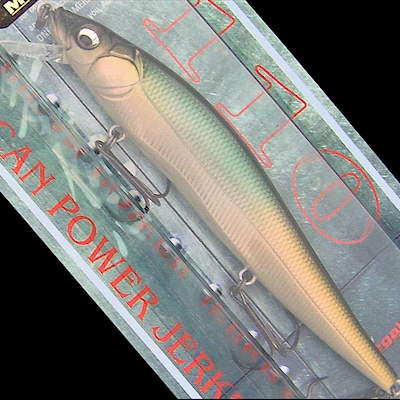
Last but not least, Ito Natural (above) is one of the most sought-after and effective Megabass colors. It's an opaque (solid) color yet as with all Megabass baits (except BONE plastic), it allows some light to penetrate the body shell, making the colors more vivid than other brands made of opaque plastics.
Anglers generally go to the solid or opaque colors (instead of translucent colors) in darker or dingier water, when there are overcast skies or other low light situations.
Well, I'd hardly say you now "know it all" about Megabass' approach to finishing, coloring and marking baits - but if you've read along, you know enough that you may now agree it is both exhilarating and vexing in complexity. Welcome to the world of Megabass!
|

